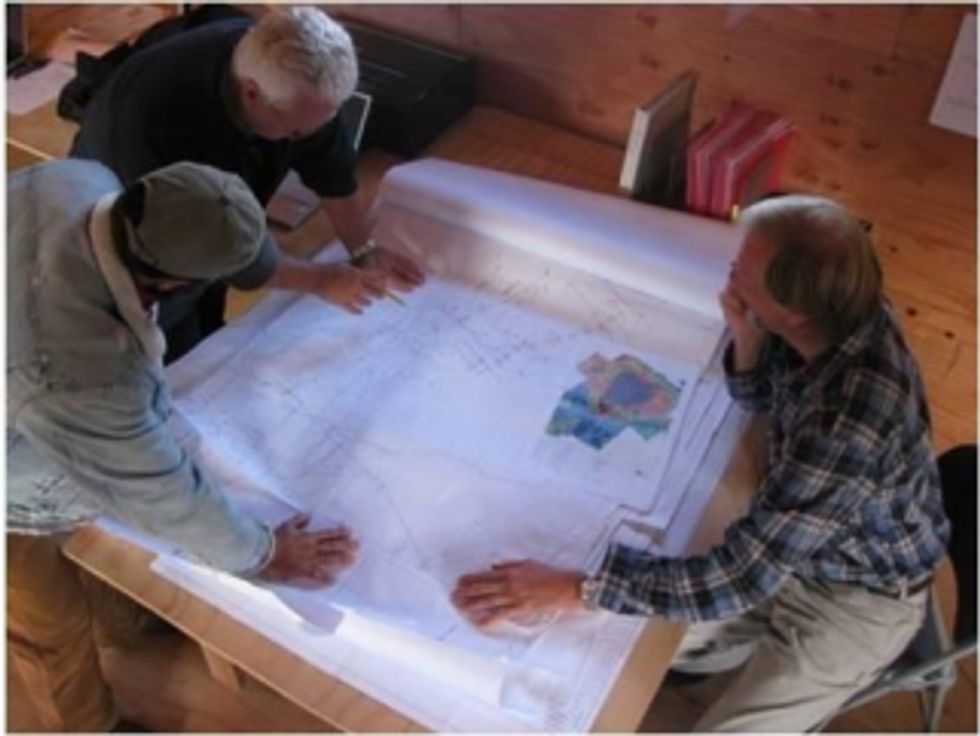- AustraliaNorth AmericaWorld
Investing News NetworkYour trusted source for investing success
- Lithium Outlook
- Oil and Gas Outlook
- Gold Outlook Report
- Uranium Outlook
- Rare Earths Outlook
- All Outlook Reports
- Top Generative AI Stocks
- Top EV Stocks
- Biggest AI Companies
- Biggest Blockchain Stocks
- Biggest Cryptocurrency-mining Stocks
- Biggest Cybersecurity Companies
- Biggest Robotics Companies
- Biggest Social Media Companies
- Biggest Technology ETFs
- Artificial Intellgience ETFs
- Robotics ETFs
- Canadian Cryptocurrency ETFs
- Artificial Intelligence Outlook
- EV Outlook
- Cleantech Outlook
- Crypto Outlook
- Tech Outlook
- All Market Outlook Reports
- Cannabis Weekly Round-Up
- Top Alzheimer's Treatment Stocks
- Top Biotech Stocks
- Top Plant-based Food Stocks
- Biggest Cannabis Stocks
- Biggest Pharma Stocks
- Longevity Stocks to Watch
- Psychedelics Stocks to Watch
- Top Cobalt Stocks
- Small Biotech ETFs to Watch
- Top Life Science ETFs
- Biggest Pharmaceutical ETFs
- Life Science Outlook
- Biotech Outlook
- Cannabis Outlook
- Pharma Outlook
- Psychedelics Outlook
- All Market Outlook Reports
With many rare earth juniors struggling amid a poor pricing environment, Ucore Rare Metals is gaining a reputation among investors as a company to watch as it advances its Bokan Mountain HREE property in Alaska.
Rare Earth Investing News sat down with Jim McKenzie, president and CEO of Ucore Rare Metals (TSXV:UCU), a development-phase mining company focused on establishing rare metal resources with near-term production potential.
The company gained increased attention recently when it announced that the US Department of Defense (DOD) signed a contract to conduct a mineralogical and metallurgical study on its Bokan Mountain heavy rare earth element (HREE) property in Southeast Alaska.
Rare Earth Investing News: Can you explain the recently-announced contract with the DOD and what it will entail — for example, terms, expectations?
Jim McKenzie: This is the first award in what we anticipate to be a series of projects with the US government. The DOD historically advances projects in phases. This first phase is a resource assessment and investigation into Ucore’s proprietary solid-phase extraction (SPE) technology. If it is satisfied with the results, we are optimistic that follow-on work will result in taking us to the pilot phase and even low-rate initial production.
Eventually, Ucore will provide the primary resource — and potentially processing capacity — in a “secure domestic supply line” for four out of five critical materials, as outlined by the Department of Energy’s Critical Materials Strategy in December 2011.
REIN: What does the DOD’s interest in securing a partnership with a REE firm mean for your company from an investor perspective?
JM: The DOD is one of the most attractive global customers for HREEs. Any time a producer enters a long-term strategic agreement with a powerful customer, the producer’s business plan is validated and de-risked.
REIN: Does the company view the DOD as a future client once it reaches the production phase? If so, what particular elements would be a main focus of this relationship? Yttrium, terbium?
JM: We foresee the eventual development of an offtake partner arrangement with the DOD, assuming our mutual objectives continue to align. The elements of interest are yttrium, dysprosium and terbium as these are of critical importance to the DOD’s ongoing strategic requirements.
REIN: What steps is Ucore taking to ensure that it stays ahead of competitors vying for a domestic supply of HREE?
JM: We are currently in discussions with large American industrial manufacturers with regards to the potential development of offtake partner agreements. Given the advanced participation by the DOD in our development process, however, we feel that we will be able to provide it with access to its critical requirements, as well as provide significant supply to other important domestic manufacturers.
REIN: You have previously mentioned that Bokan is one of only a handful of non-Chinese HREE deposits worldwide capable of attaining production within the next three to four years. Would the recent contract play a role in potentially fast tracking this project towards production?
JM: We have already begun our permitting process under the direction of our COO, Ken Collison, and our director of permitting, Randy MacGillivray. These processes are regimented and very detailed and we expect to fulfil all requirements of these regulations. Completing the National Environmental Policy Act and environmental impact statement processes will most likely be critical to our production timeline.
We feel that Ken Collison’s attention to detail and environmental consideration while developing our mine and processing plans will be advantageous. Innovations helping provide for a tailings-free operation may also help eliminate unforeseen delays.
REIN: With many viewing the recent Lynas project delay as a step backwards in the Western market’s attempt to break the Chinese monopoly on REE production, do you feel that Ucore’s project will attract more investor interest moving forward?
JM: Lynas is a light rare earth element (LREE) producer. Their products are more of a commodity and we believe that they will eventually bring their products to market. The success or failure of Lynas will have limited impact on Ucore.
Ucore is a HREE producer. As more mainstream investors become aware of the importance of heavy rare earths in high-tech, green-tech and military applications, their interest in the opportunity represented by Ucore as an integrated domestic supplier will be recognized and appreciated.
REIN: As REE prices have fallen across 2012, many are questioning whether the REE bubble has burst. What are your medium- and long-term forecasts for the REE market?
JM: We feel that HREE prices are stabilizing very quickly. China will add to their domestic mine costs as wages rise and environmentally-safe mining practices are adopted. The Chinese supply will only sustain five to 15 years of current production levels, according to their own pundits. MIT material research director, Randolph Kurchain, has forecast that the demand for dysprosium will increase by 2,600 percent over the next 25 years.
Ucore is uniquely positioned to be a primary domestic supplier of HREEs to the United States. The DOD has identified a shortfall of approximately 93 short tons of yttrium by the end of this year, and the defense consumption of dysprosium would require 100 percent of expected domestic production. This is exclusive of the dozens of new HREE applications such as wind turbines and hybrid cars.
These shortfalls show that the DOD’s investment in Ucore is a good hedge against future national security risk and these forces will serve to stabilize prices and increase pressure for them to rise over time.
REIN: Ucore’s share price has reacted positively to news of the DOD announcement. Do you still feel that the company warrants more upside in the near- to medium-term? If so, why?
JM: We feel that our share price appreciation is in its early stages. We have an efficient and environmentally-friendly mine plan and we are the preferred primary resource for developing a “secure domestic supply chain” in the US. Global supplies of HREE are being depleted, while at the same time demand for our products is growing rapidly. The US Geological Survey, in combination with our own research, estimates us as having identified “blue sky” potential of up to 10 times our current NI 43-101 compliant inferred resource. This includes potential increases to the Dotson Zone deposit at depth and on strike, as well as on other prospective zones on our claims at and around Bokan Mountain.
REIN: Ucore Rare Metals recently announced that it is now able to separate critical metals such as dysprosium and neodymium from other REEs found in a mixed concentrate. What does this mean for investors?
JM: The ability to separate HREEs and high-value LREEs, such as neodymium, into their oxolates will present substantial revenue uplift for the company. Purified oxolates are worth up to 25 percent more than a mixed concentrate. This added revenue will be of extremely high margin if our SPE research proves out as expected. This technology breakthrough could have a very significant positive impact on our net present value.
REIN: Thank you for taking the time to speak with us.
JM: Thank you.
Securities Disclosure: I, Adam Currie, hold no direct investment interest in any company mentioned in this article.
Editorial Disclosure: Ucore is not a client of the Investing News Network. This is not paid-for content.
CAUTIONARY NOTES AND DISCLAIMER
This article may contain forward-looking statements including, but not limited to, comments regarding the timing and content of upcoming work programs, geological interpretations, receipt of property titles, in-situ valuations, mining costs, potential mineral recovery processes, and other related matters. Forward-looking statements address future events and conditions and therefore involve inherent risks and uncertainties. The Ucore Rare Metals Inc properties are at an early stage. More work is required before the mineralization and the Projects’ economic aspects can be confidently modeled. No representation or prediction is intended as to the results of future work, nor can there be any promise that the estimates and projections herein will be sustained in future work or that the Projects will otherwise prove to be economic.
Outlook Reports
Featured Critical Metals Stocks
Browse Companies
MARKETS
COMMODITIES
| Commodities | |||
|---|---|---|---|
| Gold | 2390.86 | +0.85 | |
| Silver | 28.67 | +0.01 | |
| Copper | 4.52 | +0.05 | |
| Oil | 83.24 | +0.51 | |
| Heating Oil | 2.55 | +0.01 | |
| Natural Gas | 1.76 | 0.00 | |
Investing News Network websites or approved third-party tools use cookies. Please refer to the cookie policy for collected data, privacy and GDPR compliance. By continuing to browse the site, you agree to our use of cookies.





